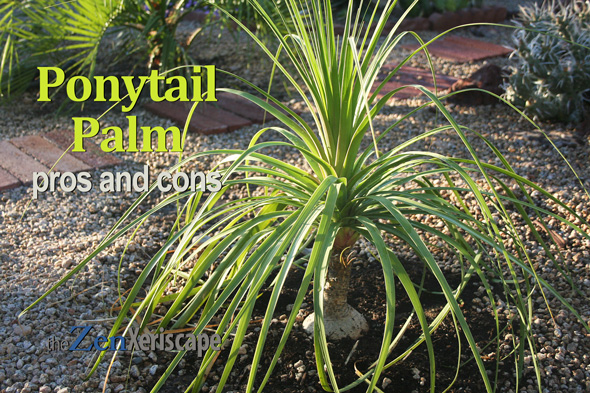There are hundreds of aloe plants that are very easy to grow, but today I’m focusing on the easy to grow aloe vera species named Aloe barbadensis Miller. It is one of the few aloes that I can grow outside, year-round, in our extreme climate of southern Arizona. So, here’s how to grow aloe vera!
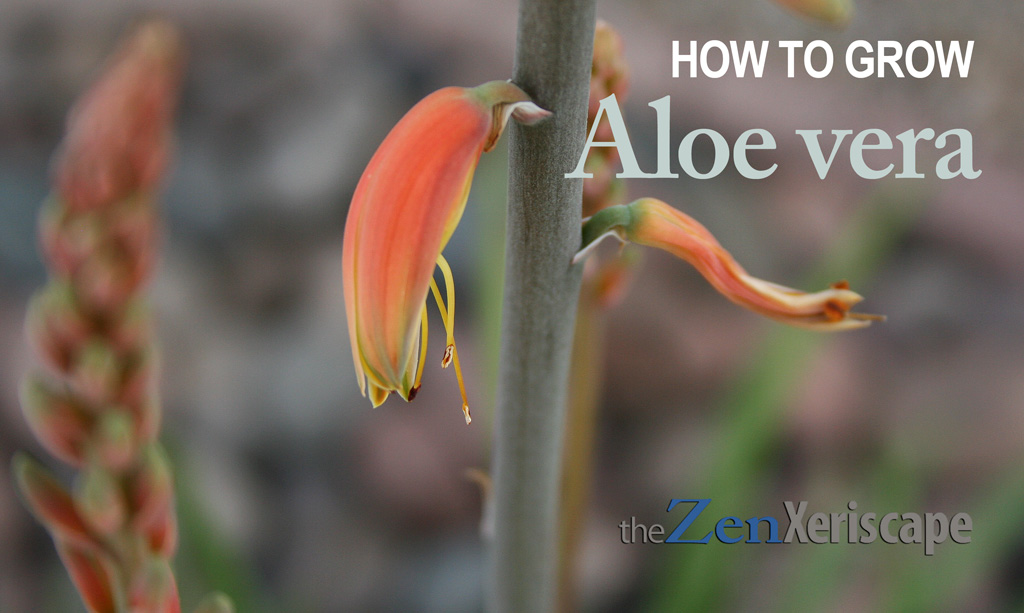
This easy-to-grow succulent plant
will do well in your drought-tolerant xeriscape.
Photo by Doug Martin
But first, what is aloe vera?
Aloe vera refers to the species named Aloe barbadensis Miller. It is a succulent plant, that just like most aloes, is extremely easy to grow. I have a few aloes as house plants, and they survive even when I neglect them for months.
Best of all, the leaves look uniquely interesting and attractive, and the plants also have beautiful, colorful flowers.
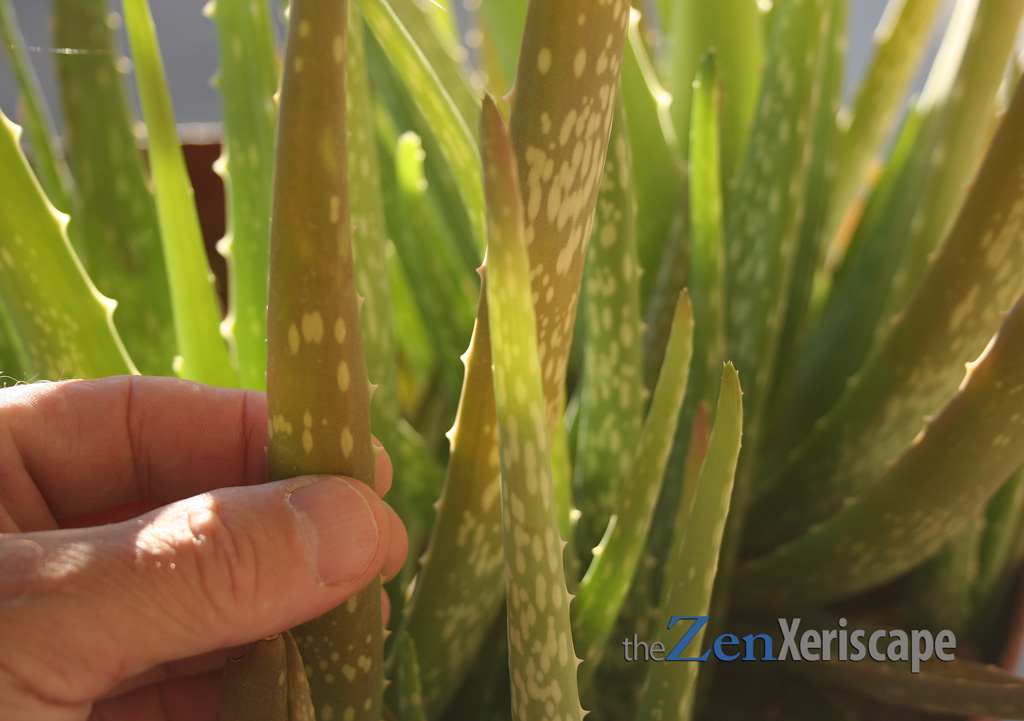
with interesting-looking leaves.
This one receives less sun and is less stressed
by the heat, so its leaves are greener.
Photo by Doug Martin
The Aloe barbadensis Miller is well-known for the gel it produces. It’s gel is derived from “leaf pulp from the parenchymal tissue…” [NIH-National Cancer Institute, “aloe vera gel”] of the plant.
What is aloe vera gel good for?
According to the National Cancer Institute website, the gel contains vitamins, amino acids, polymers, and other compounds that have been used to treat skin problems, sunburn, and also can enhance the immune system. ‘To treat wounds, scratches, or other burns, just rub it on your skin…’ [NIH, National Institute of Environmental Health Sciences, Aloe Vera]
I’ve put the gel on my skin a few times, but I was not able to discern any helpful results. So, I guess I’m a skeptic, but my applications were definitely not scientific in nature. They was just my observations, and my observations might be flawed!
So, why do I use aloe vera in my Arizona landscape?
Drought-tolerant and heat-resistant
The primary reason I can successfully grow this aloe vera in my Arizona landscape is because it can withstand the extremely hot summer temperatures. It is cold-tolerant, too.
It will survive outside in USDA Hardiness Zones of 9-to-11. My aloe veras have survived temperatures as low as the mid-20s without protection. However, if you experience lower winter temperatures, you might cover your aloe vera plants as an extra precaution.
I’ve successfully grown other aloes as houseplants, but when I tried planting them outside in Arizona, the heat burned them up. I’m sure a hard-frost would also have killed them. But not the Aloe barbadensis Miller! That plant keeps on thriving in the extreme desert heat and hard-frost conditions!
Pretty flowers, attracts hummingbirds
Best of all, this aloe vera, like most aloes, produces beautiful, long-lasting flower stalks in the spring. In addition, the delightfully peachy-green leaves look beautiful year-round! And, the hummingbirds love the flowers, too!
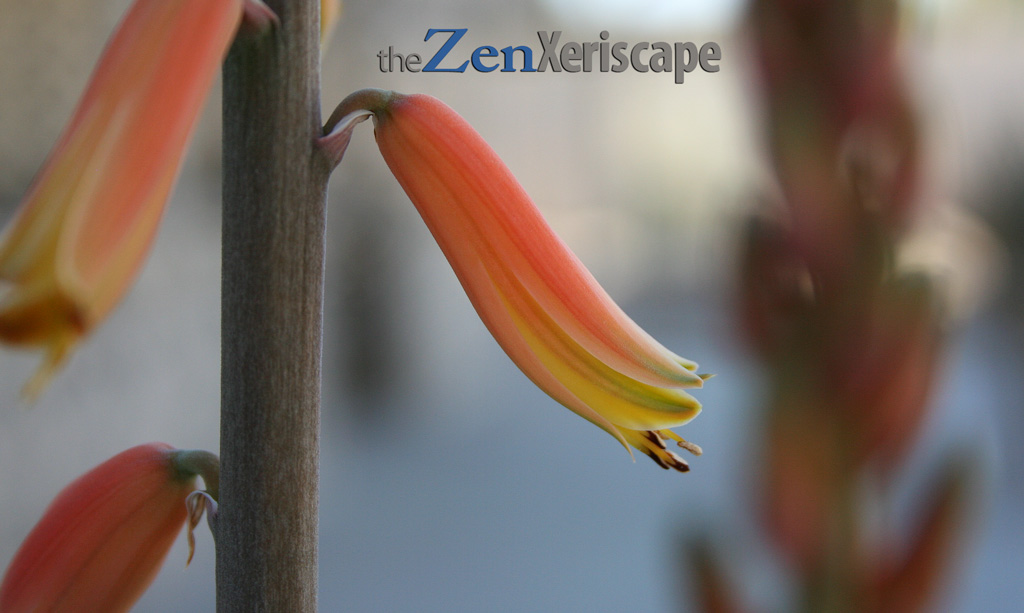
that hummingbirds love!
Even the flower stalk is lovely.
Photo by Doug Martin
Buy furniture for your outdoor garden. (As an Amazon Associate, I earn a commission from qualifying purchases.)
How to grow aloe vera
Find a pup, or buy the plant
Start with a store-bought container of aloe vera (Aloe barbadensis Miller), which should be widely available in the big-box DIY garden centers. Or, visit your local native plant nursery. Or, extract a pup from an existing plant.
If you take a pup from an existing plant, you do not have to replant it immediately. In fact, I have left pups out (in the garage or out of the sun) for a few days before replanting them.
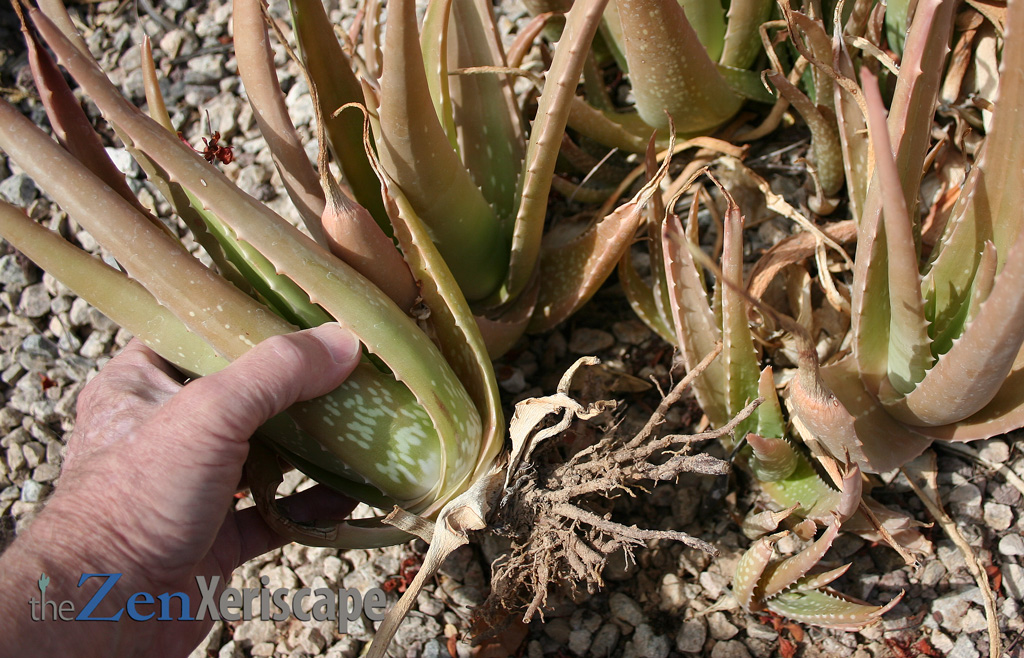
Snap off dried-up leaves around the base.
Then replant. They will form their own large colony.
Photo by Doug Martin
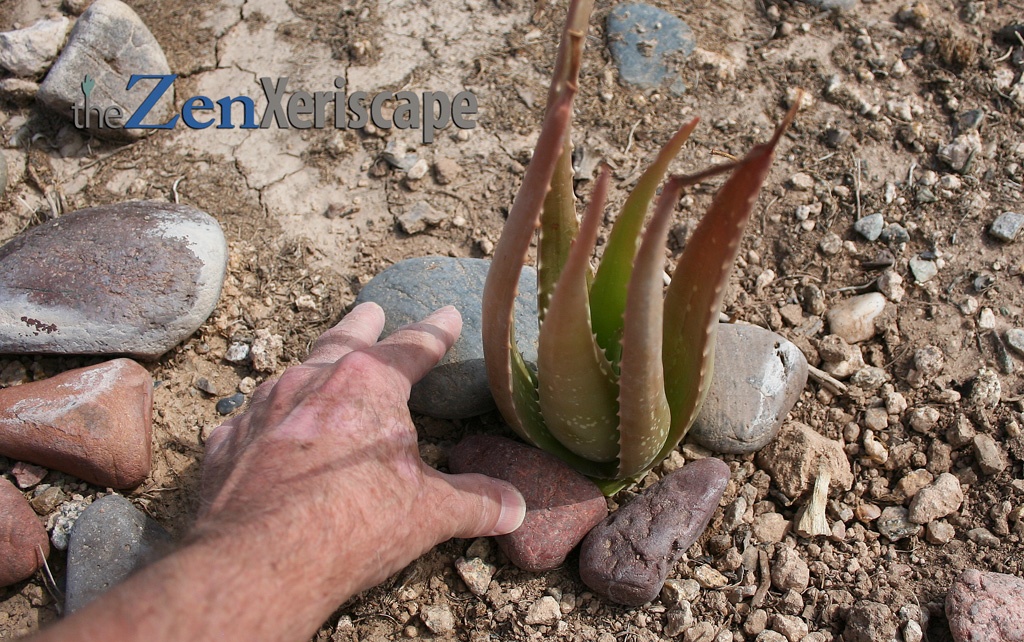
Give it space because it will propagate and expand.
Use rocks to temporarily support your new pup.
Photo by Doug Martin
Plant in full sun or partly sunny locations
I have planted this aloe vera in full sun and partly sunny locations. In either location, it has done well.
However, I did notice that the aloe veras I planted in more shady locations retained more green in their leaves. The ones in full sun had a more peachy colored, less-green appearance.
No matter where it is planted, I like the look of the green leaves or the lighter, peach-colored leaves. This plant’s versatility means it will likely work in almost any location where you plant them. Just give them at least a little sun!
Best time of season to plant
The aloe vera is one of the most versatile plants available for the drought-tolerant landscape. You can plant it any time of the year! Even in the Phoenix, Arizona summer heat, it will be okay to plant this aloe vera!
However, you should be in the USDA Hardiness Zones of 9-11 before you plant this aloe vera outside!
Find a spot, dig a hole
After finding a good location, dig a hole two-to-three times the diameter of the plant’s container.
Amend the soil if needed
If your soil doesn’t drain well, amend the soil with perlite, organic garden soil, and maybe a little sand. However, it’s best not to use sand with caliche–add some organic garden soil for best drainage.
Ironically, adding a little sand together with caliche might make your soil behave like concrete, meaning it will drain water poorly. But, by using inexpensive organic garden soil mixed in with your caliche soil, you will greatly enhance its ability to drain water.
Prune or feather-out roots
If the plant you bought is root-bound in its container, prune or pull out the roots so they don’t grow in a circle.
Plant, then tamp down soil
Put your plant in the amended soil, but be sure the leaves remain above the soil. If your aloe vera is planted too deeply, it might rot more easily.
Tamp down the soil lightly around the base. That way, your plant will remain in place.
The pup that I replanted (see the photo above) was a little top-heavy, so I tamped down the soil, and then placed a few river rocks around the plant for temporary support.
Water deeply
After planting, water deeply. Then, water your aloe vera only after the soil has completely dried out. As I water, I try to keep excess moisture away from the base of the plant.
Does aloe vera need fertilization?
I have never fertilized my aloe veras. Nevertheless, they have continued to reward me with lovely displays of spring flowers, and their uniquely beautiful vegetation.
As an experiment, you might try adding just a little fertilizer to your aloe veras, and see if it helps their growth, enhances leaf color and flower production. With the aloe vera, just a little fertilization goes a long way!
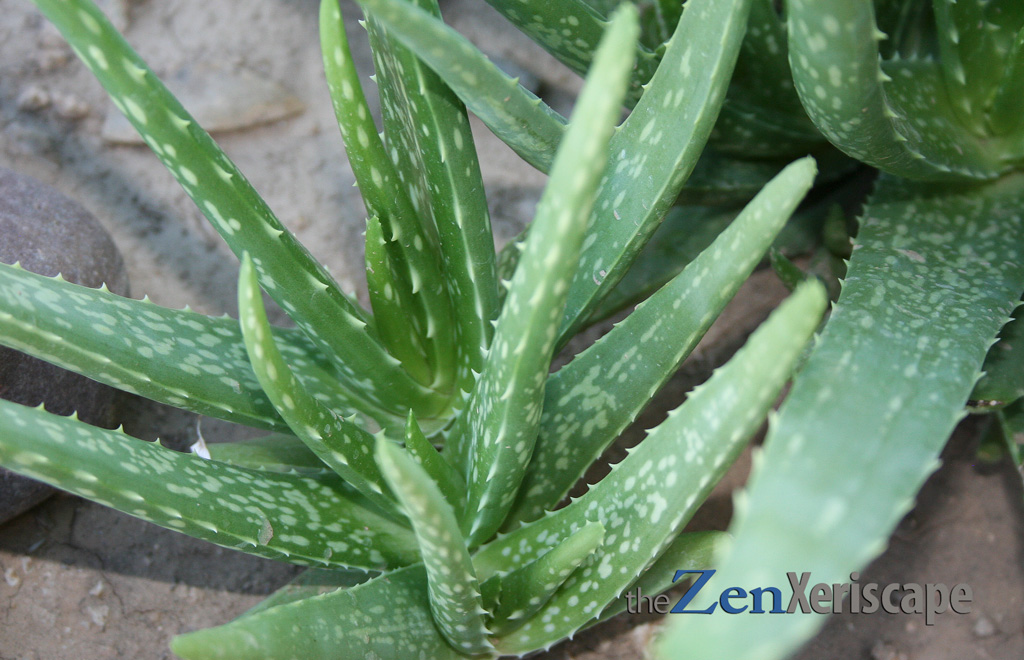
Photo by Doug Martin
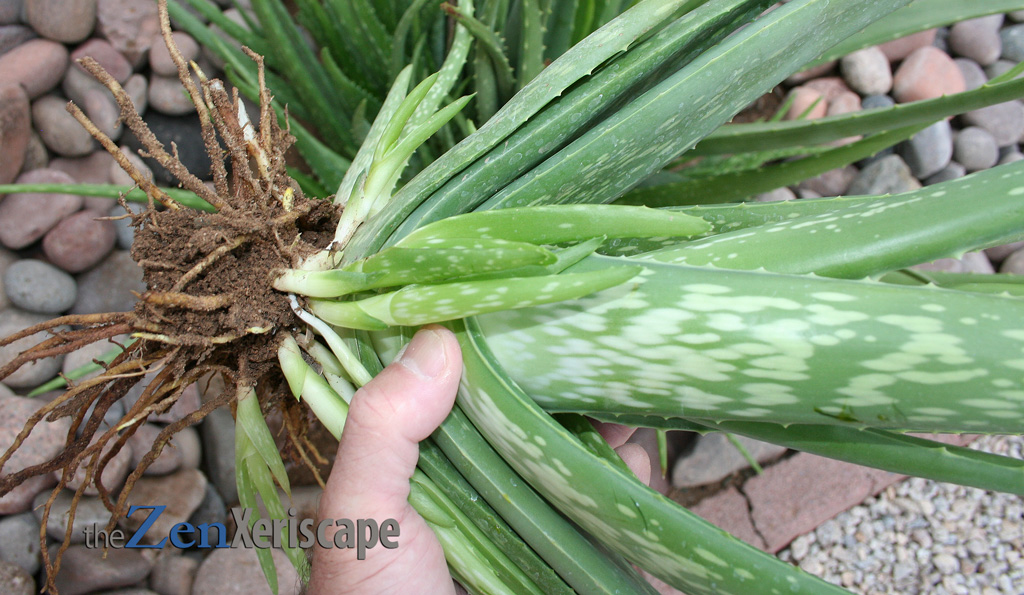
Replant it, and it will grow its own colony
of beautiful plants. Be sure to give it room!
Photo by Doug Martin
Get Prime! (As an Amazon Associate, I earn a commission from qualifying purchases.)
Takeaways
How to grow aloe vera
—They will grow in sunny or partly sunny locations.
—Use well-draining soil, or amend soil as needed.
—When you plant, keep the leaves above soil level.
—Propagate with pups to expand collection.
—Enjoy flowers in spring and throughout the year.
Content and photos by Doug Martin and The Zen Xeriscape


